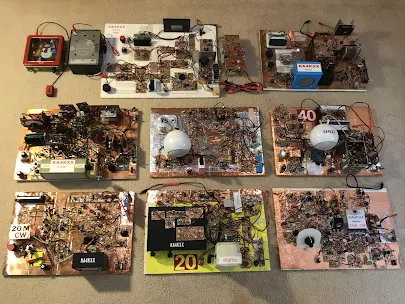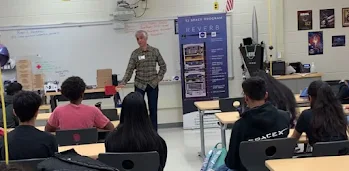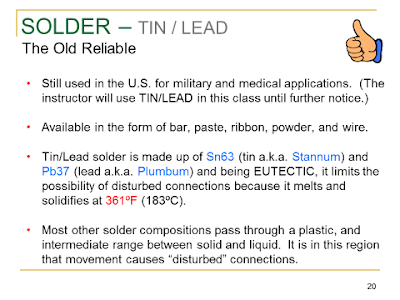SolderSmoke Podcast #247 is available:
Audio Podcast: http://soldersmoke.com/soldersmoke247.mp3
Bill’s Bench:
The 15-10 Dual Bander.
n 10
pole crystal filter at 25 MHz.
n G3UUR,
Dishal, AADE and all that..
n Testing
woes. Looked bad. But it was a bad test cable. Duh.
n VFO
(Colpitts) at around 3.5 MHz.
n Buffer
blues: Bad J-310s. Beware!
n Variable
cap from a Heath Q Multiplier
n A
bit of a black art – competing goals. Freq coverage, etc.
n BFO
needed an amp to turn on the diodes in the balanced modulator
n TIA
amps. SIX dual direction TIAs. 18 transistors.
n On
a pine board (like Frank Jones)
n Will
use the N6QW all discrete AF amp.
n Maybe
an RD16 in the final?
n Will
build a second one for the DR.
Shameless Commerce: Mostly DIY RF and the PSSST kit. Todd K7TFC reports: “The P3ST is on
track for Lee Deforest's birthday release (August 26th). I'm going to send out
another newsletter on July 4th, and I'll give some details on P3ST development.”
Results of Todd’s Survey.
Pete’s
Bench
n
FT-8 on the KWM-1!
n
Presentation to the ham club.
n Why the Icom 7300 is the anti-thesis of homebrew.
MMAILBAG:
-- SPRAT 195 Summer 2023, in the
mailbox. A happy day at N2CQR
-- Armand WA1UQO sent a wonderful book about Faraday and Maxwell… And told
me Jim K8OI was heading to our area. I
met Jim at the VWS Field Day event.
FB. Thanks Armand.
-- Tony G4WIF sent Father’s Day greetings.
-- Alvin N5VZH asking about electrolytics for his 2-B. Hayseed Hamfest!
-- John AC2RL replacements for the IBEW.
We need to start over!
-- Steve “Snort Rosin” Smith WB6TNL was in the area. Sorry I missed him.
-- Joh DL6ID helping us to track down origins of a homebrew receiver
Grayson saw in Berlin.
-- Grayson KJ7UM was in Europe visiting his wife’s relatives. But I think he is back in the USA.
-- Walter KA4KXX sent a QRP HB family portrait.
-- Wouter ZS1KE sent info on surface mount soldering.
-- George Zaff KJ6VU Ham Radio Workbench – re-runs! Recommended audio
processor. Let me know how it sounds.
-- Michael AA1TJ Great to hear
from him.
-- Alan Wolke W2AEW on the toroids
he used in Diode Ring video.
Thanks Alan!
-- Dean KK4DAS, AI and SWR meter project
And new lexicon word:
Hamsplaining.
-- Bob N7SUR -- Let me know we are semifinalists in the Hack-A-Day prize!













































